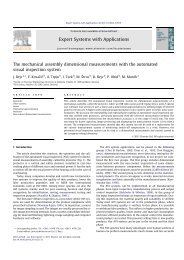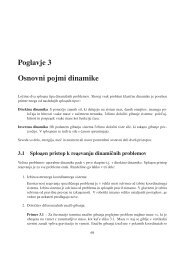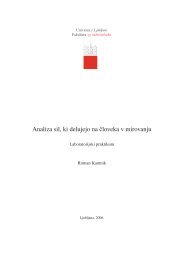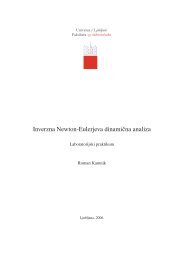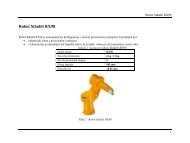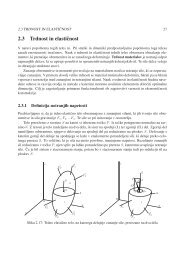ARM Processor Instruction Set
ARM Processor Instruction Set
ARM Processor Instruction Set
You also want an ePaper? Increase the reach of your titles
YUMPU automatically turns print PDFs into web optimized ePapers that Google loves.
<strong>ARM</strong> <strong>Processor</strong> <strong>Instruction</strong> <strong>Set</strong><br />
5.4.4 Writing to R15<br />
When Rd is a register other than R15, the condition code flags in the CPSR may be<br />
updated from the ALU flags as described above.<br />
When Rd is R15 and the S flag in the instruction is not set the result of the operation<br />
is placed in R15 and the CPSR is unaffected.<br />
When Rd is R15 and the S flag is set the result of the operation is placed in R15 and<br />
the SPSR corresponding to the current mode is moved to the CPSR. This allows state<br />
changes which atomically restore both PC and CPSR.<br />
Note:<br />
This form of instruction must not be used in User mode.<br />
5.4.5 Using R15 as an operand<br />
If R15 (the PC) is used as an operand in a data processing instruction the register is<br />
used directly.<br />
The PC value will be the address of the instruction, plus 8 or 12 bytes due to instruction<br />
prefetching. If the shift amount is specified in the instruction, the PC will be 8 bytes<br />
ahead. If a register is used to specify the shift amount the PC will be 12 bytes ahead.<br />
5.4.6 TEQ, TST, CMP & CMN opcodes<br />
5.4.7 <strong>Instruction</strong> cycle times<br />
These instructions do not write the result of their operation but do set flags in the<br />
CPSR. An assembler shall always set the S flag for these instructions even if it is not<br />
specified in the mnemonic.<br />
The TEQP form of the instruction used in earlier processors shall not be used in the<br />
32-bit modes, the PSR transfer operations should be used instead. If used in these<br />
modes, its effect is to move SPSR_ to CPSR if the processor is in a privileged<br />
mode and to do nothing if in User mode.<br />
Data Processing instructions vary in the number of incremental cycles taken as<br />
follows:<br />
<strong>Instruction</strong><br />
Normal Data Processing<br />
Data Processing with register specified shift<br />
Cycles<br />
1instruction fetch<br />
1 instruction fetch + 1 internal cycle<br />
Preliminary - Unrestricted<br />
Data Processing with PC written<br />
Data Processing with register specified shift<br />
and PC written<br />
3 instruction fetches<br />
3 instruction fetches and 1 internal cycle<br />
Figure 5-11: <strong>Instruction</strong> cycle times<br />
See ➲5.16.7 <strong>Instruction</strong> speed summary on page 5-55 for more information.<br />
<strong>ARM</strong>7500 Data Sheet<br />
<strong>ARM</strong> DDI 0050C<br />
5-13



